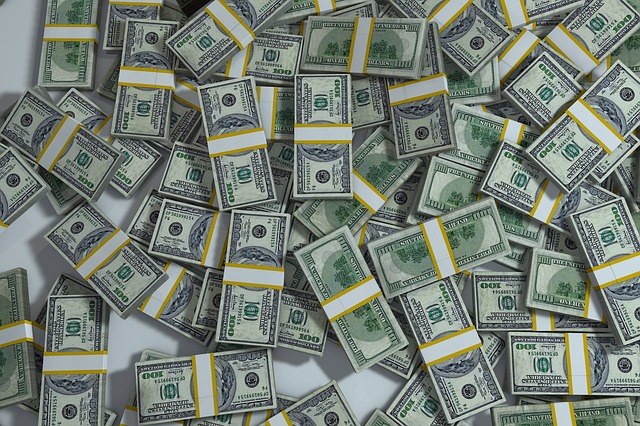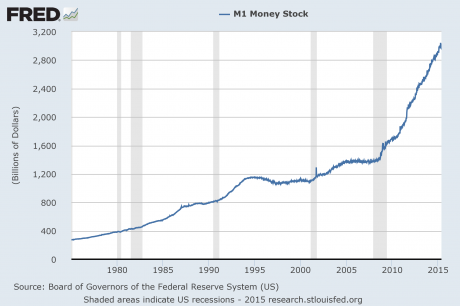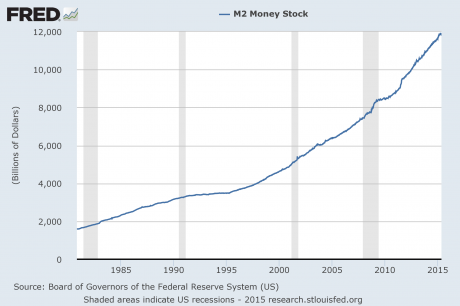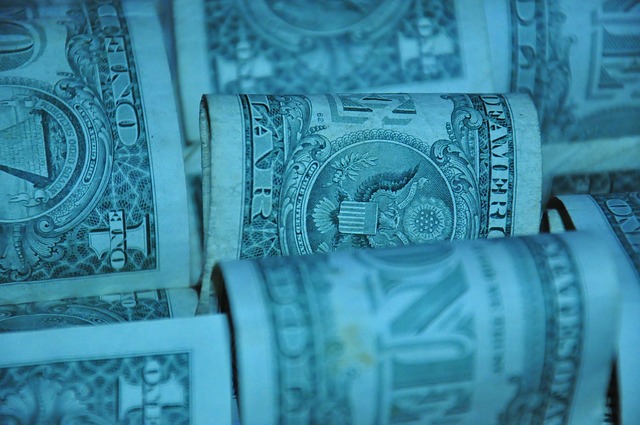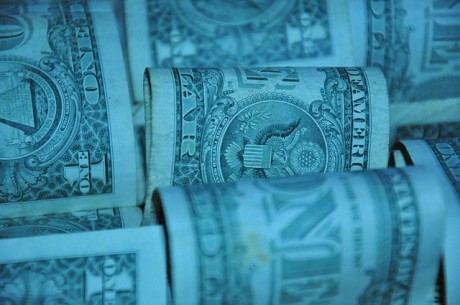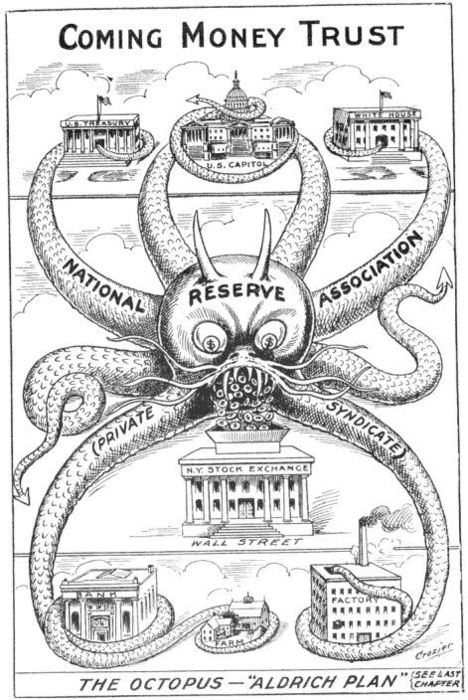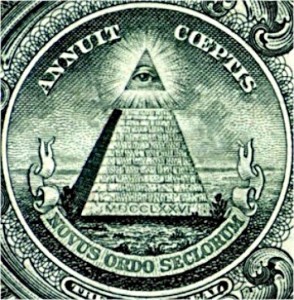 Does a shadowy group of obscenely wealthy elitists control the world? Do men and women with enormous amounts of money really run the world from behind the scenes? The answer might surprise you. Most of us tend to think of money as a convenient way to conduct transactions, but the truth is that it also represents power and control. And today we live in a neo-fuedalist system in which the super rich pull all the strings. When I am talking about the ultra-wealthy, I am not just talking about people that have a few million dollars. As you will see later in this article, the ultra-wealthy have enough money sitting in offshore banks to buy all of the goods and services produced in the United States during the course of an entire year and still be able to pay off the entire U.S. national debt. That is an amount of money so large that it is almost incomprehensible. Under this ne0-feudalist system, all the rest of us are debt slaves, including our own governments. Just look around – everyone is drowning in debt, and all of that debt is making the ultra-wealthy even wealthier. But the ultra-wealthy don’t just sit on all of that wealth. They use some of it to dominate the affairs of the nations. The ultra-wealthy own virtually every major bank and every major corporation on the planet. They use a vast network of secret societies, think tanks and charitable organizations to advance their agendas and to keep their members in line. They control how we view the world through their ownership of the media and their dominance over our education system. They fund the campaigns of most of our politicians and they exert a tremendous amount of influence over international organizations such as the United Nations, the IMF, the World Bank and the WTO. When you step back and take a look at the big picture, there is little doubt about who runs the world. It is just that most people don’t want to admit the truth.
Does a shadowy group of obscenely wealthy elitists control the world? Do men and women with enormous amounts of money really run the world from behind the scenes? The answer might surprise you. Most of us tend to think of money as a convenient way to conduct transactions, but the truth is that it also represents power and control. And today we live in a neo-fuedalist system in which the super rich pull all the strings. When I am talking about the ultra-wealthy, I am not just talking about people that have a few million dollars. As you will see later in this article, the ultra-wealthy have enough money sitting in offshore banks to buy all of the goods and services produced in the United States during the course of an entire year and still be able to pay off the entire U.S. national debt. That is an amount of money so large that it is almost incomprehensible. Under this ne0-feudalist system, all the rest of us are debt slaves, including our own governments. Just look around – everyone is drowning in debt, and all of that debt is making the ultra-wealthy even wealthier. But the ultra-wealthy don’t just sit on all of that wealth. They use some of it to dominate the affairs of the nations. The ultra-wealthy own virtually every major bank and every major corporation on the planet. They use a vast network of secret societies, think tanks and charitable organizations to advance their agendas and to keep their members in line. They control how we view the world through their ownership of the media and their dominance over our education system. They fund the campaigns of most of our politicians and they exert a tremendous amount of influence over international organizations such as the United Nations, the IMF, the World Bank and the WTO. When you step back and take a look at the big picture, there is little doubt about who runs the world. It is just that most people don’t want to admit the truth.
The ultra-wealthy don’t run down and put their money in the local bank like you and I do. Instead, they tend to stash their assets in places where they won’t be taxed such as the Cayman Islands. According to a report that was released last summer, the global elite have up to 32 TRILLION dollars stashed in offshore banks around the globe.
U.S. GDP for 2011 was about 15 trillion dollars, and the U.S. national debt is sitting at about 16 trillion dollars, so you could add them both together and you still wouldn’t hit 32 trillion dollars.
And of course that does not even count the money that is stashed in other locations that the study did not account for, and it does not count all of the wealth that the global elite have in hard assets such as real estate, precious metals, art, yachts, etc.
The global elite have really hoarded an incredible amount of wealth in these troubled times. The following is from an article on the Huffington Post website…
Rich individuals and their families have as much as $32 trillion of hidden financial assets in offshore tax havens, representing up to $280 billion in lost income tax revenues, according to research published on Sunday.
The study estimating the extent of global private financial wealth held in offshore accounts – excluding non-financial assets such as real estate, gold, yachts and racehorses – puts the sum at between $21 and $32 trillion.
The research was carried out for pressure group Tax Justice Network, which campaigns against tax havens, by James Henry, former chief economist at consultants McKinsey & Co.
He used data from the World Bank, International Monetary Fund, United Nations and central banks.
But as I mentioned previously, the global elite just don’t have a lot of money. They also basically own just about every major bank and every major corporation on the entire planet.
According to an outstanding NewScientist article, a study of more than 40,000 transnational corporations conducted by the Swiss Federal Institute of Technology in Zurich discovered that a very small core group of huge banks and giant predator corporations dominate the entire global economic system…
An analysis of the relationships between 43,000 transnational corporations has identified a relatively small group of companies, mainly banks, with disproportionate power over the global economy.
The researchers found that this core group consists of just 147 very tightly knit companies…
When the team further untangled the web of ownership, it found much of it tracked back to a “super-entity” of 147 even more tightly knit companies – all of their ownership was held by other members of the super-entity – that controlled 40 per cent of the total wealth in the network. “In effect, less than 1 per cent of the companies were able to control 40 per cent of the entire network,” says Glattfelder. Most were financial institutions. The top 20 included Barclays Bank, JPMorgan Chase & Co, and The Goldman Sachs Group.
The following are the top 25 banks and corporations at the heart of this “super-entity”. You will recognize many of the names on the list…
1. Barclays plc
2. Capital Group Companies Inc
3. FMR Corporation
4. AXA
5. State Street Corporation
6. JP Morgan Chase & Co
7. Legal & General Group plc
8. Vanguard Group Inc
9. UBS AG
10. Merrill Lynch & Co Inc
11. Wellington Management Co LLP
12. Deutsche Bank AG
13. Franklin Resources Inc
14. Credit Suisse Group
15. Walton Enterprises LLC
16. Bank of New York Mellon Corp
17. Natixis
18. Goldman Sachs Group Inc
19. T Rowe Price Group Inc
20. Legg Mason Inc
21. Morgan Stanley
22. Mitsubishi UFJ Financial Group Inc
23. Northern Trust Corporation
24. Société Générale
25. Bank of America Corporation
The ultra-wealthy elite often hide behind layers and layers of ownership, but the truth is that thanks to interlocking corporate relationships, the elite basically control almost every Fortune 500 corporation.
The amount of power and control that this gives them is hard to describe.
Unfortunately, this same group of people have been running things for a very long time. For example, New York City Mayor John F. Hylan said the following during a speech all the way back in 1922…
The real menace of our Republic is the invisible government, which like a giant octopus sprawls its slimy legs over our cities, states and nation. To depart from mere generalizations, let me say that at the head of this octopus are the Rockefeller-Standard Oil interests and a small group of powerful banking houses generally referred to as the international bankers. The little coterie of powerful international bankers virtually run the United States government for their own selfish purposes.
They practically control both parties, write political platforms, make catspaws of party leaders, use the leading men of private organizations, and resort to every device to place in nomination for high public office only such candidates as will be amenable to the dictates of corrupt big business.
These international bankers and Rockefeller-Standard Oil interests control the majority of the newspapers and magazines in this country. They use the columns of these papers to club into submission or drive out of office public officials who refuse to do the bidding of the powerful corrupt cliques which compose the invisible government. It operates under cover of a self-created screen [and] seizes our executive officers, legislative bodies, schools, courts, newspapers and every agency created for the public protection.
These international bankers created the central banks of the world (including the Federal Reserve), and they use those central banks to get the governments of the world ensnared in endless cycles of debt from which there is no escape. Government debt is a way to “legitimately” take money from all of us, transfer it to the government, and then transfer it into the pockets of the ultra-wealthy.
Today, Barack Obama and almost all members of Congress absolutely refuse to criticize the Fed, but in the past there have been some brave members of Congress that have been willing to take a stand. For example, the following quote is from a speech that Congressman Louis T. McFadden delivered to the U.S. House of Representatives on June 10, 1932…
Mr. Chairman, we have in this country one of the most corrupt institutions the world has ever known. I refer to the Federal Reserve Board and the Federal Reserve Banks. The Federal Reserve Board, a Government board, has cheated the Government of the United States and the people of the United States out of enough money to pay the national debt. The depredations and iniquities of the Federal Reserve Board has cost this country enough money to pay the national debt several times over. This evil institution has impoverished and ruined the people of the United States, has bankrupted itself, and has practically bankrupted our Government. It has done this through the defects of the law under which it operates, through the maladministration of that law by the Federal Reserve Board, and through the corrupt practices of the moneyed vultures who control it.
Sadly, most Americans still believe that the Federal Reserve is a “federal agency”, but that is simply not correct. The following comes from factcheck.org…
The stockholders in the 12 regional Federal Reserve Banks are the privately owned banks that fall under the Federal Reserve System. These include all national banks (chartered by the federal government) and those state-chartered banks that wish to join and meet certain requirements. About 38 percent of the nation’s more than 8,000 banks are members of the system, and thus own the Fed banks.
According to researchers that have looked into the ownership of the big Wall Street banks that dominate the Fed, the same names keep coming up over and over: the Rockefellers, the Rothschilds, the Warburgs, the Lazards, the Schiffs and the royal families of Europe.
But ultra-wealthy international bankers have not just done this kind of thing in the United States. Their goal was to create a global financial system that they would dominate and control. Just check out what Georgetown University history professor Carroll Quigley once wrote…
[T]he powers of financial capitalism had another far-reaching aim, nothing less than to create a world system of financial control in private hands able to dominate the political system of each country and the economy of the world as a whole. This system was to be controlled in a feudalist fashion by the central banks of the world acting in concert, by secret agreements arrived at in frequent private meetings and conferences. The apex of the system was to be the Bank for International Settlements in Basle, Switzerland, a private bank owned and controlled by the world’s central banks which were themselves private corporations.
Sadly, most Americans have never even heard of the Bank for International Settlements, but it is at the very heart of the global financial system. The following is from Wikipedia…
As an organization of central banks, the BIS seeks to make monetary policy more predictable and transparent among its 58 member central banks. While monetary policy is determined by each sovereign nation, it is subject to central and private banking scrutiny and potentially to speculation that affects foreign exchange rates and especially the fate of export economies. Failures to keep monetary policy in line with reality and make monetary reforms in time, preferably as a simultaneous policy among all 58 member banks and also involving the International Monetary Fund, have historically led to losses in the billions as banks try to maintain a policy using open market methods that have proven to be based on unrealistic assumptions.
The ultra-wealthy have also played a major role in establishing other important international institutions such as the United Nations, the IMF, the World Bank and the WTO. In fact, the land for the United Nations headquarters in New York City was purchased and donated by John D. Rockefeller.
The international bankers are “internationalists” and they are very proud of that fact.
The elite also dominate the education system in the United States. Over the years, the Rockefeller Foundation and other elitist organizations have poured massive amounts of money into Ivy League schools. Today, Ivy League schools are considered to be the standard against which all other colleges and universities in America are measured, and the last four U.S. presidents were educated at Ivy League schools.
The elite also exert a tremendous amount of influence through various secret societies (Skull and Bones, the Freemasons, etc.), through some very powerful think tanks and social clubs (the Council on Foreign Relations, the Trilateral Commission, the Bilderberg Group, the Bohemian Grove, Chatham House, etc.), and through a vast network of charities and non-governmental organizations (the Rockefeller Foundation, the Ford Foundation, the World Wildlife Fund, etc.).
But for a moment, I want to focus on the power the elite have over the media. In a previous article, I detailed how just six monolithic corporate giants control most of what we watch, hear and read every single day. These giant corporations own television networks, cable channels, movie studios, newspapers, magazines, publishing houses, music labels and even many of our favorite websites.
Considering the fact that the average American watches 153 hours of television a month, the influence of these six giant corporations should not be underestimated. The following are just some of the media companies that these corporate giants own…
Time Warner
Home Box Office (HBO)
Time Inc.
Turner Broadcasting System, Inc.
Warner Bros. Entertainment Inc.
CW Network (partial ownership)
TMZ
New Line Cinema
Time Warner Cable
Cinemax
Cartoon Network
TBS
TNT
America Online
MapQuest
Moviefone
Castle Rock
Sports Illustrated
Fortune
Marie Claire
People Magazine
Walt Disney
ABC Television Network
Disney Publishing
ESPN Inc.
Disney Channel
SOAPnet
A&E
Lifetime
Buena Vista Home Entertainment
Buena Vista Theatrical Productions
Buena Vista Records
Disney Records
Hollywood Records
Miramax Films
Touchstone Pictures
Walt Disney Pictures
Pixar Animation Studios
Buena Vista Games
Hyperion Books
Viacom
Paramount Pictures
Paramount Home Entertainment
Black Entertainment Television (BET)
Comedy Central
Country Music Television (CMT)
Logo
MTV
MTV Canada
MTV2
Nick Magazine
Nick at Nite
Nick Jr.
Nickelodeon
Noggin
Spike TV
The Movie Channel
TV Land
VH1
News Corporation
Dow Jones & Company, Inc.
Fox Television Stations
The New York Post
Fox Searchlight Pictures
Beliefnet
Fox Business Network
Fox Kids Europe
Fox News Channel
Fox Sports Net
Fox Television Network
FX
My Network TV
MySpace
News Limited News
Phoenix InfoNews Channel
Phoenix Movies Channel
Sky PerfecTV
Speed Channel
STAR TV India
STAR TV Taiwan
STAR World
Times Higher Education Supplement Magazine
Times Literary Supplement Magazine
Times of London
20th Century Fox Home Entertainment
20th Century Fox International
20th Century Fox Studios
20th Century Fox Television
BSkyB
DIRECTV
The Wall Street Journal
Fox Broadcasting Company
Fox Interactive Media
FOXTEL
HarperCollins Publishers
The National Geographic Channel
National Rugby League
News Interactive
News Outdoor
Radio Veronica
ReganBooks
Sky Italia
Sky Radio Denmark
Sky Radio Germany
Sky Radio Netherlands
STAR
Zondervan
CBS Corporation
CBS News
CBS Sports
CBS Television Network
CNET
Showtime
TV.com
CBS Radio Inc. (130 stations)
CBS Consumer Products
CBS Outdoor
CW Network (50% ownership)
Infinity Broadcasting
Simon & Schuster (Pocket Books, Scribner)
Westwood One Radio Network
NBC Universal
Bravo
CNBC
NBC News
MSNBC
NBC Sports
NBC Television Network
Oxygen
SciFi Magazine
Syfy (Sci Fi Channel)
Telemundo
USA Network
Weather Channel
Focus Features
NBC Universal Television Distribution
NBC Universal Television Studio
Paxson Communications (partial ownership)
Trio
Universal Parks & Resorts
Universal Pictures
Universal Studio Home Video
And of course the elite own most of our politicians as well. The following is a quote from journalist Lewis Lapham…
“The shaping of the will of Congress and the choosing of the American president has become a privilege reserved to the country’s equestrian classes, a.k.a. the 20% of the population that holds 93% of the wealth, the happy few who run the corporations and the banks, own and operate the news and entertainment media, compose the laws and govern the universities, control the philanthropic foundations, the policy institutes, the casinos, and the sports arenas.”
Have you ever wondered why things never seem to change in Washington D.C. no matter who we vote for?
Well, it is because both parties are owned by the establishment.
It would be nice to think that the American people are in control of who runs things in the U.S., but that is not how it works in the real world.
In the real world, the politician that raises more money wins more than 80 percent of the time in national races.
Our politicians are not stupid – they are going to be very good to the people that can give them the giant piles of money that they need for their campaigns. And the people that can do that are the ultra-wealthy and the giant corporations that the ultra-wealthy control.
Are you starting to get the picture?
There is a reason why the ultra-wealthy are referred to as “the establishment”. They have set up a system that greatly benefits them and that allows them to pull the strings.
So who runs the world?
They do. In fact, they even admit as much.
David Rockefeller wrote the following in his 2003 book entitled “Memoirs”…
“For more than a century, ideological extremists at either end of the political spectrum have seized upon well-publicized incidents such as my encounter with Castro to attack the Rockefeller family for the inordinate influence they claim we wield over American political and economic institutions. Some even believe we are part of a secret cabal working against the best interests of the United States, characterizing my family and me as ‘internationalists’ and of conspiring with others around the world to build a more integrated global political and economic structure — one world, if you will. If that is the charge, I stand guilty, and I am proud of it.”
There is so much more that could be said about all of this. In fact, an entire library of books could be written about the power and the influence of the ultra-wealthy international bankers that run the world.
But hopefully this is enough to at least get some conversations started.
So what do you think about all of this? Please feel free to post a comment with your thoughts below…

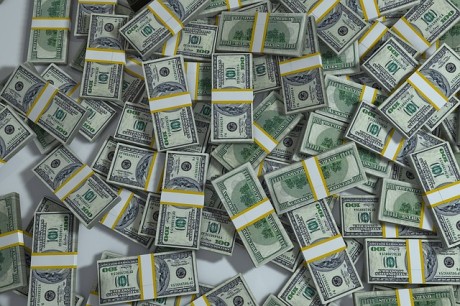 Did you know that if you took every single penny away from everyone in the United States that it still would not be enough to pay off the national debt? Today, the debt of the federal government exceeds $145,000 per household, and it is getting worse with each passing year. Many believe that if we paid it off a little bit at a time that we could eventually pay it all off, but as you will see below that isn’t going to work either. It has been projected that “mandatory” federal spending on programs such as Social Security, Medicaid and Medicare plus interest on the national debt will exceed total federal revenue by the year 2025. That is before a single dollar is spent on the U.S. military, homeland security, paying federal workers or building any roads and bridges. So no, we aren’t going to be “paying down” our debt any time in the foreseeable future. And of course it isn’t just our 18 trillion dollar national debt that we need to be concerned about. Overall, Americans are a total of 58 trillion dollars in debt. 35 years ago, that number was sitting at just 4.3 trillion dollars. There is no way in the world that all of that debt can ever be repaid. The only thing that we can hope for now is for this debt bubble to last for as long as possible before it finally explodes.
Did you know that if you took every single penny away from everyone in the United States that it still would not be enough to pay off the national debt? Today, the debt of the federal government exceeds $145,000 per household, and it is getting worse with each passing year. Many believe that if we paid it off a little bit at a time that we could eventually pay it all off, but as you will see below that isn’t going to work either. It has been projected that “mandatory” federal spending on programs such as Social Security, Medicaid and Medicare plus interest on the national debt will exceed total federal revenue by the year 2025. That is before a single dollar is spent on the U.S. military, homeland security, paying federal workers or building any roads and bridges. So no, we aren’t going to be “paying down” our debt any time in the foreseeable future. And of course it isn’t just our 18 trillion dollar national debt that we need to be concerned about. Overall, Americans are a total of 58 trillion dollars in debt. 35 years ago, that number was sitting at just 4.3 trillion dollars. There is no way in the world that all of that debt can ever be repaid. The only thing that we can hope for now is for this debt bubble to last for as long as possible before it finally explodes.